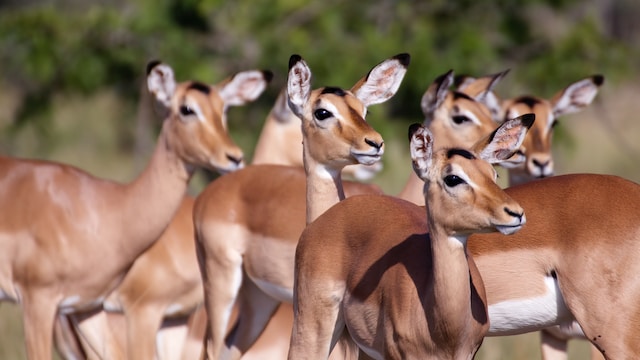Deer are majestic creatures; many love seeing them in the wild. They are a beautiful subject for photographers and videographers. While some like to hunt them for meat, there are many other reasons to keep them around your property. A deer feeder can help you attract deer so that you can enjoy them and the benefits they bring to the local ecosystem.
Why Feed Deer?
Deer are beautiful, graceful creatures to look at, and they play an important role in the local ecosystem and its ability to support even more biodiversity in the area. Deers benefit many environments, including woodlands, pastures, woodland pastures, and marshlands. Deer recycle nutrients back into the soil by consuming vegetation and returning it to the soil via scat. They also keep brushy vegetation to a minimum because it is one of their favourite foods.
When deer browse in an area, they create small niches for invertebrates and other small animals. They also provide food for predators, such as coyotes and wolves. Deer are interconnected to many other plants and animals in the local ecosystem. Feeding deer attracts them to an area, increasing the chances of viewing other wildlife. Another reason to feed deer in the winter is that it provides them with enough nutrition to keep the herd strong, not to mention some wonderful opportunities for viewing and photography.
What Type of Food to Use in Your Feeder
Deer are opportunistic browsers and will enjoy a variety of snacks. During the winter, natural food sources for deer become harder to find. One of the most dangerous months for deer is March. That is because they have depleted their fat stores and not enough food is available. Feeding them during this time can bring good results and attract them to your feeder. You can feed a commercial deer feed that has everything they need to stay healthy as a staple. You can usually find these at your local feed store.
Commercial deer feed is a good thing to have as a regular food source, but they also love treats. Treats for deer can include apples, grapes, pears, peas, and carrots. They also like shelled sunflower seeds, walnuts, acorns, and other types of grain, like oats or alfalfa. One thing to be aware of is that many people feed deer corn. They will eat corn, but it is not the best thing for them. In some cases, diets high in corn can kill deer because they cannot digest it properly.
Another thing you need to know is that it is a good idea to introduce new food slowly. Also, if you have been supplemental feeding, it is best to do it consistently. Sporadic feeding can be harmful to deer. The deer’s digestive system depends heavily on its microbiome. It takes about a two-week period to adjust to new foods before they will begin to extract nutrients from them.
Where to Place Your Feeder
When deciding where to place your feeder, understanding your local herd’s natural browsing and travel patterns can be helpful. If you have a wooded area with deer paths running through it, placing the feeder just off the path can be a good location. You can also place them on the edge of a field. Deer like to feel safe when feeding, so placing it near a tree line or fence line with the brush is another good option, but you will also want to make sure you have a concealed hiding place where you can have a clear view.
Deers might be shy about a new item in their territory, even if it is food-filled. It is a good idea to introduce the feeder and allow the deer to get used to it being there before you begin to fill it with food. Once you find a good spot, keeping it in the same place from year to year is best.
Feeding deer for viewing and photography can be a rewarding experience. Now that you know the basics, it is time to find a deer feeder and start enjoying the results of this hobby.

